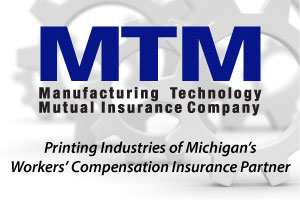
By Joe Rickard
Getting in front of senior executives can quickly change the future of a salesperson or a printing company. There is no better way to quickly develop and generate large sales than to gain access to senior decision makers.
Great printing salespeople can impact decisions about strategy, budgets, and marketing that are driven by senior levels of management. Many of these decisions cannot be found in the purchasing or department manager levels.
Executives want to talk to salespeople who can help them address their “big” problems and opportunities. For salespeople, that requires confidence, a thorough knowledge of graphic and digital communications, and an ability to bring creative ideas to their customers.
There are two great outcomes of an executive sales call: one is to gain agreement that what you have to offer is valuable to the executive’s organization; and two, the executive opens the organization to further sales meetings.
FIVE STEPS FOR A GREAT EXECUTIVE MEETING
1. Preparation It may take hours of preparation to gain just one great meeting with the right executive. It is worth it. The first challenge is to identify those CEOs, presidents, division presidents, and executive VPs in each targeted account. Having detailed information about their company, its objectives, its campaigns, and programs will increase the likelihood of success in securing the first meeting.
With gatekeepers blocking the way, and the likelihood that the target will not pick up the phone, a brief and impactful talk track to generate interest must be prepared in advance. In a few cases, the executive may actually pick up the phone. A short crisp message and a simple request for a meeting is the best strategy.
2. A Great Entrance A great first impression is vital. Though rapport building is important, keep the superficial banter to a minimum. Executives are looking for information and expertise. A professional appearance and demeanor will help. Briefly state your purpose, a brief overview of why you are there, and what you expect from the meeting. Make sure you share amount of time you will need for this meeting. Then just ask, “Is this okay with you?” A confident start will establish a solid foundation for the rest of the sales call.
3. Share the Dream Once the stage is set, it is time to share what you have discovered about the customer and their problems. You can do this by using facts and research on issues being faced by similar organizations and sharing them in a tailored way.
For instance, as part of your story to a hospital executive looking to expand their services, you could say, “According to the Direct Marketing Association, 83% of people find direct mail easier to absorb than email. We have found that our hospital clients who integrate direct mail along with their digital communications have increased their ability to sell additional and new services to their patients.”
Be prepared to share your case studies on how specifically you have helped similar organizations. By sharing facts about how your company and printing has helped other companies improve their performance, potential customers will want to hear more.
Then follow up with questions like this:
“How are you currently marketing your new clinical services?”
“What is the strategy of the hospital to attract new patients?”
“How will you address the new trends in the market?”
By asking probing questions, listening and letting the customer talk about the company and their priorities, the executive will become part of the sales call. Creating an optimistic vision for the customer will allow the discussion to continue.
4. Sync Up and Discuss Linkages Now is the time when the salesperson connects what has been discussed by the customer to how your company can help. By tailoring and summarizing the key points of the customer’s problems, you will be able to link what you sell to what the customer needs. A good exchange of ideas and agreements on how the salesperson can help the customer will lead to a close.
5. Close for an Open Door The final step is to gain agreement on what needs to be done next. It is rarely the time to close for an order. It is an opportunity to gain the executive’s endorsement for access to key influencers and stakeholders who are involved in the decision chain. The ideal goal is an open door to developing a well-qualified recommendation to visit other departments and staff. Since it often takes much time to gain a good meeting, preparation and execution is paramount. There may never be another chance to get a second meeting.
There has never been a time in recent history where it has been as important for printing salespeople to raise their level of contact within their customer organization. There is so much change in how printing can impact a customer’s top and bottom line that executives will welcome a meeting with a knowledgeable salesperson.







